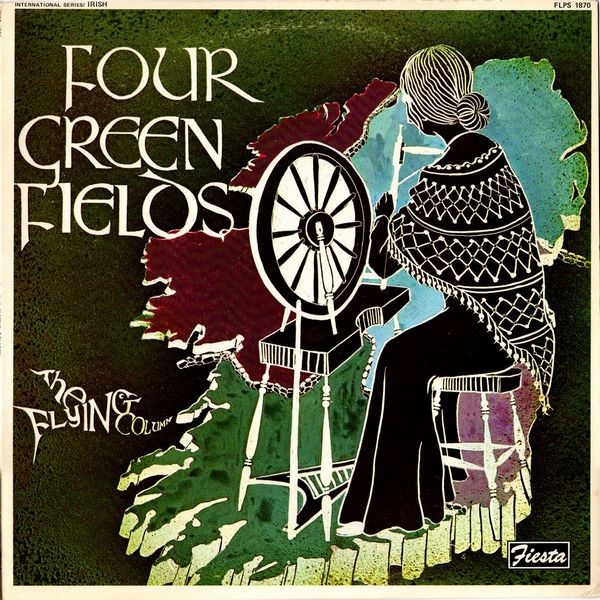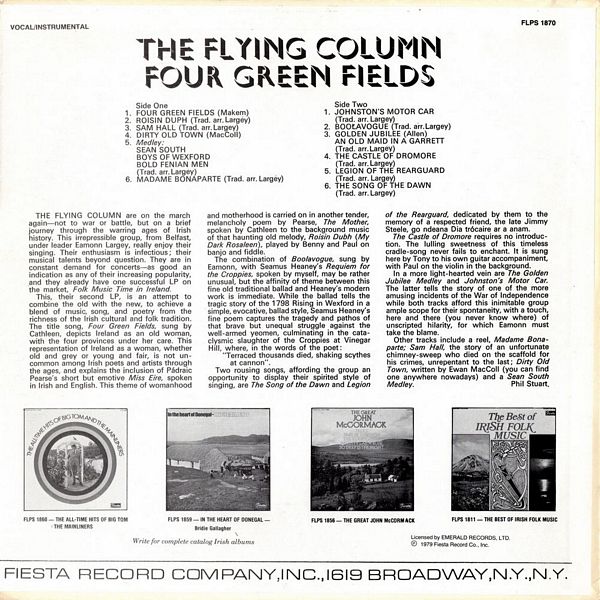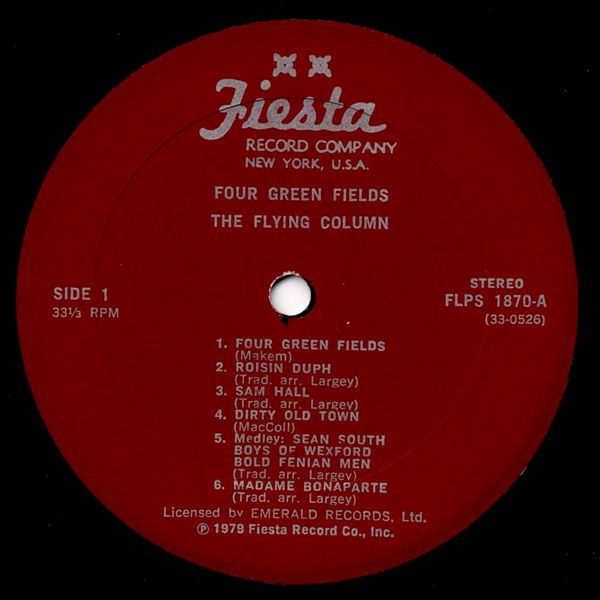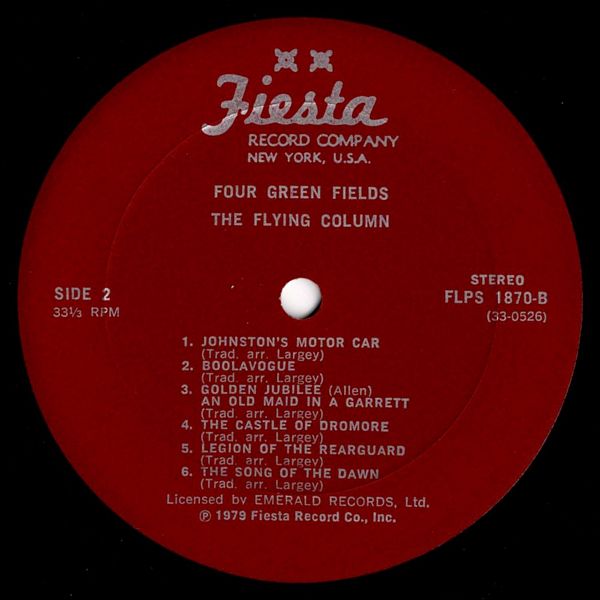
 |



|
Sleeve Notes
THE FLYING COLUMN are on the march again-not to war or battle, but on a brief journey through the warring ages of Irish history. This irrepressible group, from Belfast, under leader Eamonn Largey, really enjoy their singing. Their enthusiasm is infectious; their musical talents beyond question. They are in constant demand for concerts-as good an indication as any of their increasing popularity, and they already have one successful LP on the market, Folk Music Time in Ireland.
This, their second LP, is an attempt to combine the old with the new, to achieve a blend of music, song, and poetry from the richness of the Irish cultural and folk tradition. The title song, Four Green Fields, sung by Cathleen, depicts Ireland as an old woman, with the four provinces under her care. This representation of Ireland as a woman, whether old and grey or young and fair, is not uncommon among Irish poets and artists through the ages, and explains the inclusion of Padraic Pearse's short but emotive Miss Eire, spoken in Irish and English. This theme of womanhood and motherhood is carried on in another tender, melancholy poem by Pearse, The Mother, spoken by Cathleen to the background music of that haunting old melody, Roisin Dubh (My Dark Rosaleen), played by Benny and Paul on banjo and fiddle.
The combination of Boolavogue, sung by Eamonn, with Seamus Heaney's Requiem for the Croppies, spoken by myself, may be rather unusual, but the affinity of theme between this fine old traditional ballad and Heaney's modern work is immediate. While the ballad tells the tragic story of the 1798 Rising in Wexford in a simple, evocative, ballad style, Seamus Heaney's fine poem captures the tragedy and pathos of that brave but unequal struggle against the well-armed yeomen, culminating in the cataclysmic slaughter of the Croppies at Vinegar Hill, where, in the words of the poet:
"Terraced thousands died, shaking scythes at cannon".
Two rousing songs, affording the group an opportunity to display their spirited style of singing, are The Song of the Dawn and Legion of the Rearguard, dedicated by them to the memory of a respected friend, the late Jimmy Steele, go ndeana Dia trócaire ar a anam.
The Castle of Dromore requires no introduction. The lulling sweetness of this timeless cradle-song never fails to enchant. It is sung here by Tony to his own guitar accompaniment, with Paul on the violin in the background.
In a more light-hearted vein are The Golden Jubilee Medley and Johnston's Motor Car. The latter tells the story of one of the more amusing incidents of the War of Independence while both tracks afford this inimitable group ample scope for their spontaneity, with a touch, here and there (you never know where) of unscripted hilarity, for which Eamonn must take the blame.
Other tracks include a reel, Madame Bonaparte; Sam Hall, the story of an unfortunate chimney-sweep who died on the scaffold for his crimes, unrepentant to the last; Dirty Old Town, written by Ewan MacColl (you can find one anywhere nowadays) and a Seán South Medley.
Phil Stuart